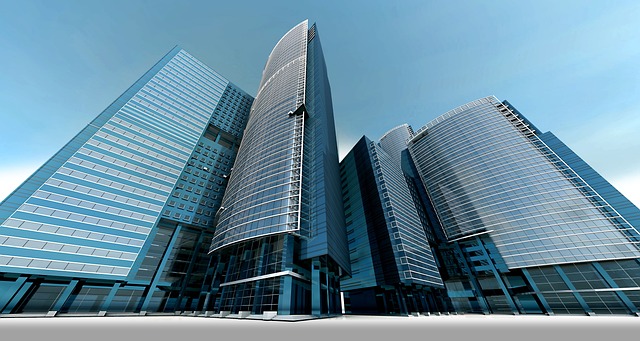Advanced 3D CAD architectural visualization techniques empower architects, urban planners, and developers with essential tools for presenting large-scale projects. Through aerial and panoramic renderings, stakeholders can experience proposed structures virtually, enhancing decision-making and collaboration. This technology enables early identification of issues, streamlines project lifecycles, and facilitates spatial understanding. Integrating aerial imaging further improves presentations, showcasing accurate scale, layout, and environmental impact. High-quality panoramic results demand meticulous attention to detail, seamless transitions, advanced rendering engines, and refined lighting settings for immersive experiences.
Aerial and panoramic renderings are transforming large-scale project visualization, offering unprecedented levels of detail and immersion. This article delves into the world of these powerful tools, exploring their application in architectural visualization through 3D CAD software. We’ll uncover techniques that enhance design communication, analyze benefits for project stakeholders, and provide best practices for achieving high-quality panoramic results. By the end, you’ll understand why these renderings are becoming indispensable in the industry.
Understanding Aerial and Panoramic Renderings: A Tool for Large-Scale Project Visualization
Aerial and panoramic renderings are powerful visual tools that play a significant role in the realm of large-scale project planning and presentation. These cutting-edge technologies allow architects, urban planners, and developers to showcase their designs with remarkable realism and detail. By integrating 3D CAD architectural visualization techniques with aerial imaging and panoramic views, professionals can create immersive representations of proposed structures and environments.
This innovative approach offers a comprehensive way to understand and communicate complex architectural concepts. With aerial renderings, every aspect of a project—from towering skyscrapers to intricate landscapes—can be precisely depicted, providing stakeholders with a clear and shared vision. Panoramic views further enhance this experience by offering an all-encompassing perspective, enabling folks to navigate virtually through the proposed space, fostering better decision-making and collaboration throughout the development process.
The Role of 3D CAD in Architectural Visualization: Techniques and Benefits
In the realm of large-scale project planning and development, 3D CAD (Computer-Aided Design) has become an indispensable tool for architects and designers. It offers a powerful means to visualize and communicate complex architectural concepts with unparalleled precision. By creating detailed digital models, 3D CAD allows professionals to explore every facet of a design, from structural integrity to aesthetic appeal, before construction even begins. This early stage involvement is pivotal in identifying potential issues and making informed decisions, ultimately streamlining the entire project lifecycle.
The benefits of 3D CAD architectural visualization are multifaceted. It enables dynamic panoramic renderings, allowing stakeholders to experience immersive virtual walkthroughs of proposed structures. This technique not only aids in understanding spatial layouts but also facilitates the identification of design elements that may be overlooked in traditional 2D drawings. Moreover, 3D CAD models can be easily manipulated and modified, enabling quick adjustments to designs based on client feedback or changing project requirements, thereby enhancing efficiency and reducing potential costly mistakes.
Creating Immersive Experiences: Applications of Aerial Renderings in Large-Scale Projects
Aerial renderings, with their ability to capture and depict vast landscapes and structures from a bird’s-eye view, have become indispensable tools in large-scale project planning and presentation. By integrating 3D CAD architectural visualization techniques with aerial imaging, designers and architects can create immersive experiences that bring projects to life in a way traditional two-dimensional plans cannot match. This technology enables stakeholders, clients, and the public to gain a comprehensive understanding of the proposed development’s scale, layout, and impact on the surrounding environment.
In large-scale urban planning, for instance, aerial renderings can showcase the harmonious integration of new buildings with existing infrastructure, highlighting key features such as open spaces, water bodies, and transportation networks. Similarly, in landscapes and environmental projects, these renderings offer a unique perspective to illustrate ecological restoration efforts or the potential impact of construction on natural habitats. By creating photorealistic images or animations, project teams can effectively communicate their designs, foster public engagement, and make informed decisions throughout the development process.
Best Practices and Considerations for Achieving High-Quality Panoramic Results
Achieving high-quality panoramic results in 3D CAD architectural visualization requires a meticulous approach and attention to detail. One key consideration is ensuring seamless transitions between images, creating a continuous view that captures the entirety of the project. This involves careful planning and positioning of camera angles to cover all relevant areas without overlapping or gaps. Using advanced rendering engines capable of handling large-scale scenes is essential for accurate and detailed outputs.
Additionally, lighting and material settings play a significant role in the final aesthetic. Properly simulating natural light and applying realistic materials can greatly enhance the immersive quality of the panorama. It’s important to strike a balance between realism and performance, as complex settings may impact rendering times. Regular testing and adjustments are necessary to refine the visualization, ensuring the panoramic result accurately represents the intended architectural design.
Aerial and panoramic renderings, powered by advanced 3D CAD architectural visualization techniques, have become indispensable tools for bringing large-scale projects to life. From immersive experiences in urban planning to detailed visualizations in infrastructure development, these technologies offer a window into the future, enabling stakeholders to make informed decisions and ensure stunning, realistic outcomes. By adopting best practices and leveraging the capabilities of 3D CAD, professionals can create panoramic renderings that not only meet but exceed expectations, ultimately revolutionizing how we conceptualize and communicate ambitious architectural and engineering visions.
